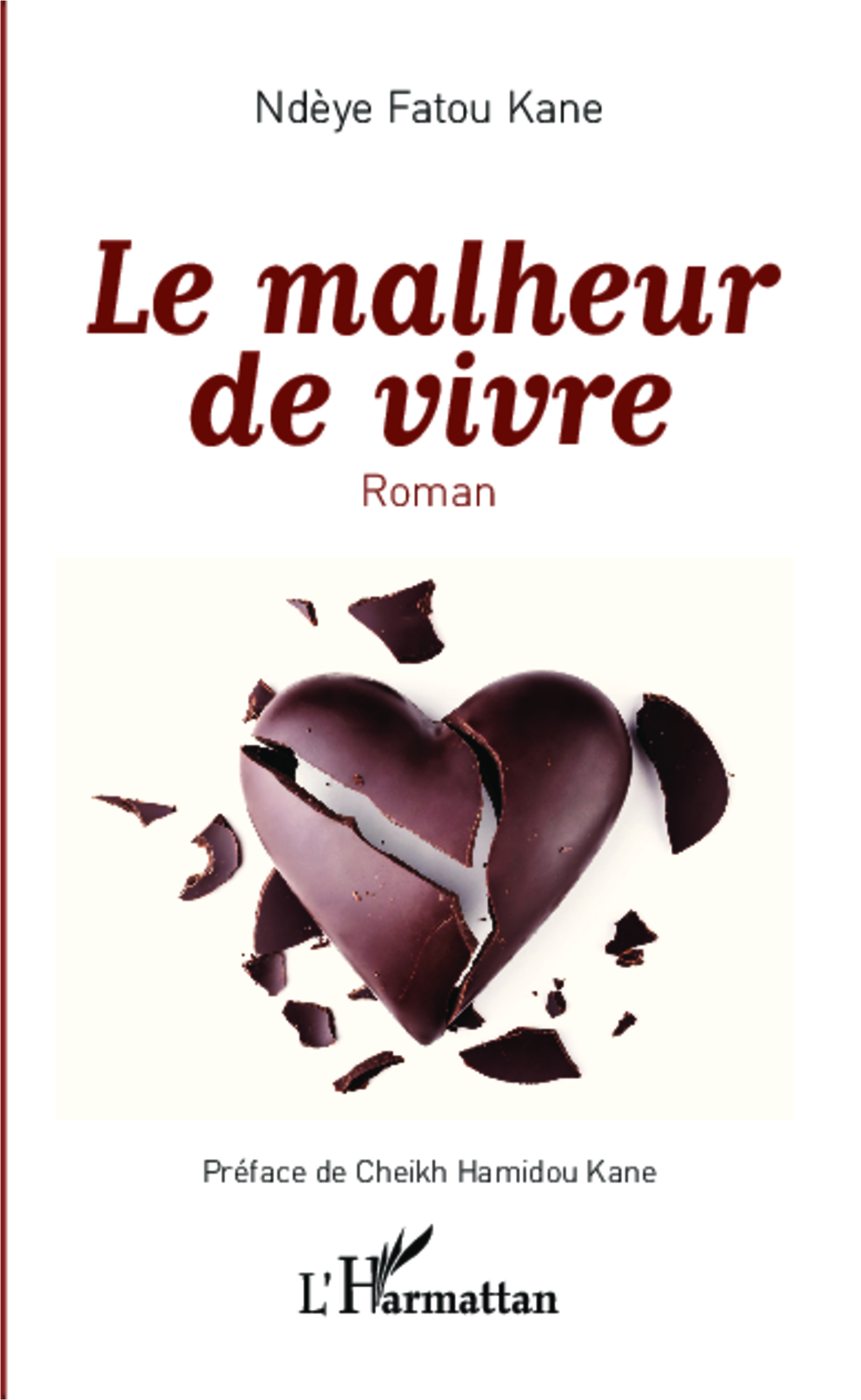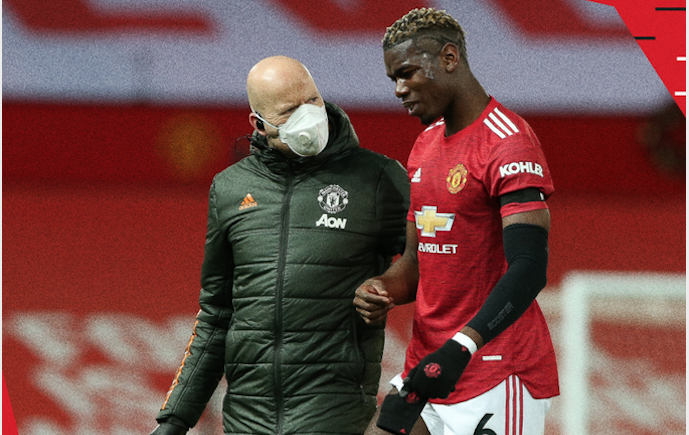A LA UNE CULTURE
SENEGAL: Blogger Ndeye Fatou Kane delivers her “misfortune to Life”.

Her name is Ndèye Fatou Kane, 30 years old. Born in Senegal where she lived until she reached the age of majority before flying to France, where she pursued part of her higher studies that she had started in Senegal. Diplomas in her pocket, she is looking for professional experience. But above all, Ndeye Fatou Kane had little chance of escaping the virus of writing. Especially with a grandfather: the famous Sheikh Hamidou Kane, author of “The ambiguous adventure” and a father fond of literature. The first work by Ndèye Fatou Kane, Le malheur de vivre, published in 2014, was hailed by critics.
Ze-Africanews.com: Tell us about your first readings … of those that marked you?
Ndèye Fatou Kane: There was a bookstore that no longer exists alas) located in downtown Dakar which was called Maxi Books. Every pretext was good for my father so that we could make a tour: birthday, holidays, good grades gathered in class. The books of the Comtesse de Ségur, the Club des 5, the adventures of Fantômette, the hooded rival, The Tales of Ahmadou Koumba, Ben and Mortimer constituted the main part of my readings until my 12-13 years. As I grew up, my literary tastes were refined. I discovered African literature in its quintessence and there was a plurality of contemporary authors to my grandfather (Sheikh Hamidou Kane, ed): Ahmadou Kourouma, Amadou Hampâté Bâ, Mariama Bâ, Aminata Sow Fall … And that ‘ is quite naturally that I wanted, in turn, inspired by what I was reading, to take the pen in my turn.
Thus was born, The misfortune to live, your first novel?
What made me want to write this book is twofold: to summon up values that seem to me a bit “out of phase” nowadays and to speak of this deep Africa in which I fully recognize myself. I have spoken above of Mariama Bâ and Aminata Sow Fall. I admire these two women of letters enormously because, in addition to their modernity, they have succeeded, through their writings, in developing social, cultural and even political themes that are still prevalent today. All this makes me write the spatio-temporal space of the “Woe to live” between the Dakar and the Paris of the 1980s, not forgetting the Fouta, my native region, land of the Hal Pulaar. I talk about it among other themes of recourse (and not return) to sources, culture, immigration.

The misfortune of living (Le malheur de vivre).
You also take for a pretext a love story. That of the main character Sakina and a boy Dakar … which ends in his descent into hell …
Exactly. I’m part of a love story to brew wide. By putting opposite Sakina, a young halpulaar deeply rooted in her culture, despite the fact that she lives in France with her parents, Amadou and Mariam Bâ, has lost nothing of her “pularitude”, with Ousmane, halpulaar too, but who was caught by the city of Dakar. Through these two characters, I emphasize what I was talking about earlier, namely, the need for an individual to claim a culture, because I think that without culture, we lose the foundation which allows us to have a balance.
After this first novel, you participated in a collective work, “Franklin the insoumis”, a collection of short stories to pay tribute to Congolese author and singer Franklin Boukaka?
So this project was born on a proposal made to me by the initiator, Marien Ngombé, of Congolese origin. He wanted to pay tribute to Franklin Boukaka, a committed Congolese singer who was assassinated in the 1970s. I did not immediately accept it, because as I am not of Congolese origin, I did not know whether I had the legitimacy of a ” enter into this project. But the music did the rest. I had to listen to a CD of songs from Franklin Boukaka to fall in love with his music and I wanted to participate in the Franklin project, the rebellious.
“Books are a central part of my life! “
So, there is also the blogger Ndeye Fatou Kane who talks to us naturally about books. In your blog, do you share your favorites?
Yes, the blog was born eight years ago, because at the beginning, when I was reading books or wanting to discuss a subject, I taught my friends by making them read or listen to my diatribes (laughs). My taste for reading went crescendo and I created the blog “Ma petite Bulle”. At first, I was talking about everything: mood tickets, company facts, album tracklist, but recently I only talk about books, so new readers believe it’s a literary blog, but it is no worse because books occupy a central place in my life.
How do you choose your readings?
My reading choices are made with feeling: I can know an author and want to read his latest publication. Or, on the contrary, be attracted by a cover page, or a summary of the book and want to know more. In my library, you can find everything, magazines, novels, essays. I particularly like political books and African novels. I have a weakness for books dealing with Africa, although I tend to vary now.
What are your last three readings?
I recently read “Sarbaru Jinne” by Pope Samba Kane, a satirical Senegalese journalist. “Sarbaru Jinne” or “The Tam-Tams of the devil”, is a work with a strong mystic connotation, because the author drags us into a sabar (dance Senegalese, ed) danced by jinns under philosophy and mysticism . The author shows great erudition and performs superb flashbacks between the Medina, populated district of Dakar and his two characters Talla and Massata. I also read “Wandering” from Ibrahima Hane. This work is already my favorite of the year 2017. Ibrahima Hane performs an X-ray of Senegalese society. Between Adja Tabara Fall, the corrupt politician, Seyni Sene, the left-winger who takes her revenge on the life and brotherhood of Baye, Ibrahima Hane points out the paradoxes under which Senegalese society is buried. And I’m reading “The Bridgetower Sonata” by Emmanuel Dongala, which tells us about the life and work of Georges de Bridgetower, a black classical musician, virtuoso of the violin, somewhat oblivious.

Ndèye Fatou Kane, writer and blogger.
What does reading mean to you?
Reading and writing because one does not go without the other in my opinion, are an integral part of my life. When I am sad, I read or when I am happy I immediately want to put my feelings on paper, share them with my literary alter ego! Since everyone has a passion, a leitmotiv, my literary activity is deeply rooted in me. Nothing beats the pleasure of discovering new works, of smelling the peculiar smell of paper, of pointing at the relics scattered in the house. This is enough for my happiness
And what are you working on right now?
I am currently working on a small test that is in the replay and correction phase. I hope it will appear shortly. I do not say more, go to the publication.
A LA UNE CULTURE
SENEGAL – An artistic discovery named Miriam Kanté

Miriam Kanté is a French-Senegalese singer with Italian and Spanish origins. She was invited by the great Senegalese singer Pape Diouf, leader of the Conscious Generation on stage during the charity gala evening on Friday, December 23, 2022 in Paris. Ze-Africanews went to meet him.
Who is Miriam Kanté?
Self-taught, she starts with the classical piano and then passes the entrance exam at the conservatory. But she quickly changes her mind and wants to dance. At the age of three, she was already a classical dancer, and at the age of twelve, she began working in modern jazz. She also practiced flamenco (the cradle of her origins). In Andalusia, she meets gypsies, flamenco singers, who don’t even speak Spanish, but she quickly appropriates this gypsy music. However, she is already attracted to other cultures, other music. Little anecdote: at the age of three, when she is with her family having lunch at a large hotel in Megève in a hotel-restaurant, she wants to put herself in the lap of a lady who took care of the cleaning in the hotel. She was a Senegalese mama, the warmth of this woman, her affection for her, will forever mark her life.
His attraction to Africa…
Very curious and open-minded, Miriam loves to travel and discover the world. She is attracted by Africa, and especially by Senegal. But first, she goes to Morocco, to Tunisia, because she loves oriental dance. In Tunisia and major producers will offer him a contract, as well as the production of a clip, his father opposes it, it is the end of the story with Tunisia. Since her early childhood, Miriam has been so attracted to Africa, the cradle of humanity, which she says is “a destiny”. While she is only 16 years old, carefree, an old wise Moroccan foretells her, “You will marry a man who is not of your color and you will go live in his country where you will be very happy and famous”. A prediction that, even if it did not matter to her at that time, materializes in time: Miriam will meet her husband of Senegalese origin who was still a student, a love at first sight that will materialize in a marriage. They have a 20-year-old daughter who models.
Songs about apartheid and slavery…
The divorce of her parents while Miriam was seven years old followed by her mother’s illness, affected her severely. She is then left to herself, she thus devotes herself to her art and spirituality to forget and heal her pains. However, she remains shy and introverted, she locks herself in and composes. Miriam began to write songs about apartheid, subjects that marked him during his college years. It’s a documentary on the same theme that makes her inconsolable, she’ll be depressed for a week. She watches slavery movies called “The Color of Purple.” She often cries and asks Mom, “Why do you hurt your people?”
Senegal: Love at first sight…
She discovers the country through her husband. When she goes to the country of Téranga, she is extremely touched and saddened by poverty and some difficulties, the lack of water. She immediately wants to help: She will do several charitable and humanitarian works. Since then she has been there more than ten times. This country, which she defines as a country rich in culture, colours, human warmth and the dignity of the Senegalese people, she loves with all her heart, she who knows only the colour of the heart. The first time Miriam went to Senegal, it was a real love at first sight, she is under the spell of everything and especially of Senegalese culture. She integrates very quickly, is interested in local cuisine and besides she learns to cook all dishes (thiep, mafé, kandja soup, etc.). She dresses in Senegalese dress and sings in wolof.

His musical repertoire…
In Senegal, she sings first, with the band Tabou on the small coast. However, she has always loved American music including Withney Houston, Marvin Gaye, Mariah Carey, Luther Vandross, Lionel Ritchie, Aretha Francklin; Rhythm and blues: Otis Redding. A great music lover since childhood, she loves reggae: Bob Marley, Alpha Blondy, Steel Pulse or Ub40 accompany her on her playlist. She also listens to Céline Dion, Jean-Jacques Goldman, Cabrel or Gilbert Montagné. She is completely seduced and passionate about the Mbalax. She discovers “Seconds” the duo of Youssou’ Ndour and Neneh Cherry. A great love story begins between her and Senegalese music. She begins to dissect all Senegalese music through Omar pene, Thione Seck, Assane Ndiaye, Alioune M’baye Nder Souleymane Faye, Ismaël Lô, Sheikh Lô, Baaba Maal, Viviane N’ Dour, then Pape Diouf.
His meeting with Pope Diouf, leader of the conscious generation…
A stroke of fate! While Miriam is on a trip to Dakar, she tries to see Pape Diouf in concert and is told that he is in Europe. She is disappointed because her wish was to meet him. Sitting in a hotel in the square, she turns around and sees Pope Diouf behind her, she cannot believe it. She gets up, questions her and they discuss, Pope diouf very welcoming, humble, warmly invites her as a vip with her family on the small coast to a concert. He will do her the honor of a composition especially for her: a whole song! Miriam very touched by the gesture, will befriend the singer and will later share his passion for the song. He asks her for a video. She sends him an interpretation of “Pas toi”, a Goldman song. Pape Diouf offers him to set up artistic projects together. The song “Sadio” is their last collaboration, sung in French and Wolof, and will be performed at the gala evening at the Méridien in Paris in front of an admiring audience. She is preparing a duet with the leader of the Conscious generation as well as a single.


A LA UNE CULTURE
SENEGAL – Amélie Mbaye, the art of making films with great mastery

“One daguay teuth sa guémigne! Two daguay teuth sa guémigne! Tree daguay teuth sa guémigne!” (One, shut up! Two, shut up! Three, shut up!) , it was through the series “Emprises” that Amélie Mbaye democratized this expression, an expression of course, which was tweeted thousands of times through TikTok. This mythical phrase has allowed him to retain viewers around his strong character: … the gangsta mom, the lioness mom, the protective mom, the chicken mom, finally the mom who wants to manage everything even the choice of her children. The one who is willing to punish, threaten, manipulate, socialize and even kill people who want to get in her way, but also between her and her children, who only she knows what is good for them.
Amélie Mbaye is one of those actresses who can be defined as out of the ordinary. She masters her field. Cinema is what she likes to do with incredible precision and sagacity. By herself, she can do the show. She has the weight of an actress who drains passions, compassion, she invites to a trip to each of the characters played. What a feat! Her charisma overflowing, her perfect body, her ebony complexion, her wasp size, her devastating smile, Amelie Mbaye is like a muse in the spotlight. We enjoy watching her come into action and create this fusion that a viewer can have with her heroine. She’s just masterful!
But who is Amélie Mbaye?
Amélie Mbaye is an American of Senegalese origin, born in Dakar, Senegal. She studied tourism, aeronautics and foreign languages in France in Caen. She was Telepeakerine at the RTS in Dakar then Presenter in various television shows in Dakar and Los Angeles where she is based with her son who is also a singer whose stage name is Boogie Fresh. Miss Africa Times in 2001, she was the lead actress in the famous television series of Apolline Traoré “Monia et Rama”, shot in Ouagadougou in Burkina Faso where she played the main role of Aline. In 2004, she played with Bruce Willis in “Tears of the sun”. She speaks five languages (French, English, Spanish, Portuguese and Wolof). Amélie Mbaye is based for more than twenty years in Los Angeles, California. She has made her mark in film production and has already appeared in many films around the world. Outside her acting job, she is also a singer. Ze-Africanews met her in this full interview.




A LA UNE CULTURE
SENEGAL – Maïmouna Doucouré, a great French cinema worker

Maïmouna Doucouré is a great French-Senegalese director. Despite the mixed reactions around her film «Mignonnes», the genius of the French director’s cinematographic art does not fade. It is impossible to fall into disgrace when we talk about such realistic themes. She illustrates herself in a technique of which she seems the only one to have the secret: polygamy. She emphasizes the complex relationships children have with polygamy. An avant-garde with a unique style that the world never ceases to celebrate. From «Cache-cache» to «Hawa», all his work is a grandiose fresco in which belong the African traditionalist movements still struggling with modernity.
Born in 1985 in Paris, Maïmouna Doucouré is the daughter of a family of Senegalese immigrants. Coming to France, the family settled in the 19th arrondissement of Paris. The young woman obtained an S baccalaureate and a bachelor’s degree in biology at the University of Paris VI. At the same time, she takes theatre classes in the laboratory of actress Hélène Zidi. In 2012, following a scenario competition initiated by the Social Union for Habitat, she made her first short film on equity entitled «Cache-cache». She won the 3rd HLM Prize and the heart of the jury of the Génération Court festival in Aubervilliers. Then, «Maman» will follow and will collect nearly 60 international awards. This film has brought him into the circle of renowned French creators. In this film, she portrays the rather tormented life of a girl in a polygamous home. A girl that the heat of a home burns so much that she decides to kill her father’s second wife.

But, Maïmouna Doucouré’s film that will make people talk about her is «Mignonnes». Made in 2017, this film comes out on screens in 2020. He received the Global Filmmaking Award. That same year, the film was nominated for Césars in the “Best First Film” category. It’s the story of a group of hypersexualized pre-teens. Amy, the main character, is under attack.
The United States, which abounds in this kind of scandal-ridden film, castigated the film. The director is accused of promoting «the obscene exhibition of the genitals of minors, soliciting a lustful interest for sex». Yet it is quite the opposite. The film denounces, according to the director, the early sexualization of girls who allow themselves to be carried away by sexual excesses amplified by social networks. Censorship is like yeast. It makes the sauce rise. The media storm has no control over the film, which in 2019 receives the Academy of Oscars Gold Fellowship for Women. What’s in this movie to make so much talk.
Amy, the heroine, is a pre-teen girl of one-year-old from Senegal. She lives in a tiny apartment in the north of Paris with her mother and two brothers. As in «Maman», Amy sees her family – a polygamous family – going to the dogs. The suffering her mother is experiencing is hard on her. The country wants to go back to Senegal with the second woman. She is fed up with collective prayer and all that has to do with tradition. Faced with her aunt’s advice, she turned a deaf ear. She discovered dancing with Angelica. Through hard work, she joined a dance group «Mignonnes» title of the film. There, the film begins. Light outfit, daring gesture, sensual, borderline pornographic. Quite the opposite of what her aunt strives to teach her. The school humiliations and negative reactions, and the daring photos that leaked on social media, all this cocktail drive the girl to depression. Family problems eventually transform the girl who now shows herself as a socialite.
-

 EAST AFRICA1 year .
EAST AFRICA1 year .TANZANIA – President meets with Chairman of the Board and CEO of the Merck Foundation
-

 CULTURE1 year .
CULTURE1 year .SENEGAL – Massamba Guèye wants to democratize the story
-

 CULTURE2 years .
CULTURE2 years .SENEGAL – Thiéboujeun inscribed on the World Heritage Site
-

 CULTURE3 years .
CULTURE3 years .SENEGAL – “Sadik Lady” by Viviane Chidid
-

 A LA UNE3 years .
A LA UNE3 years .GUINÉE: Manchester United: Paul Pogba absent several weeks
-

 MOROCCO1 year .
MOROCCO1 year .MOROCCO – The King of Morocco Mouhamed VI finally in Dakar, tomorrow Tuesday
-

 IMMIGRATION9 months .
IMMIGRATION9 months .AFRICA – Migrant smuggling brings 59 billion CFA francs to smugglers per year
-

 HANDBALL3 years .
HANDBALL3 years .TOKYO 2021 – France’s women’s handball team dominates Sweden and go to the final



